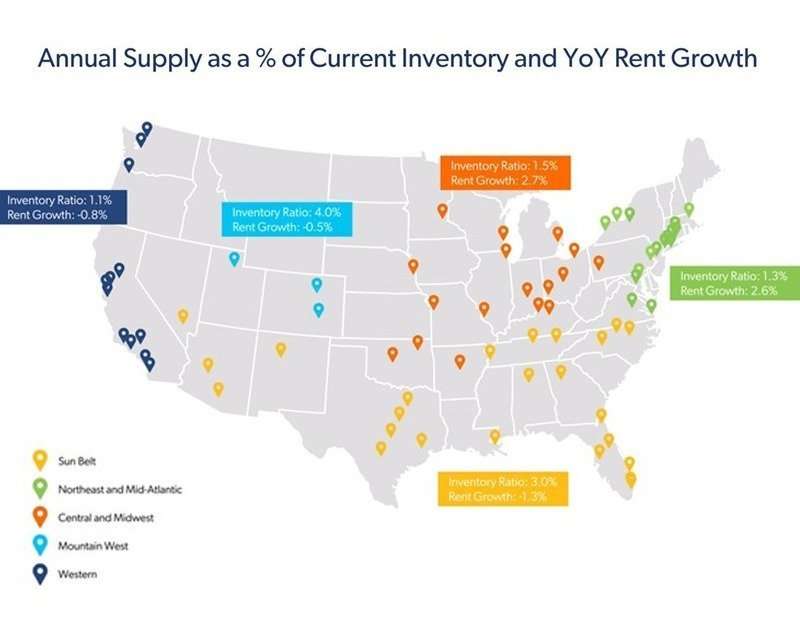
What to Watch in 2024: Multifamily Outlook Offers Demand the Chance To Match Supply
Slowing Completions Would Be a Welcome Relief, but Pipelines in Most Sun Belt Markets Could Be Elevated
After hitting a 40-year high for completed units in 2023, the U.S. multifamily market is expected to see a 25% pullback next year, which should help balance out the market.
Roughly 590,000 units were completed last year, according to CoStar data, though only 444,000 units are projected to come on line in 2024. While this easing of new builds would likely be well-received by owners and property managers, it is still more than the five-year, pre-pandemic annual average of 360,000 units.
The projected slowing in completions would come none too soon given that the past two years of construction outpaced demand by 607,000 units, pushing the national vacancy rate up from 4.8% to 7.6%. Yet if absorption—the difference in move-ins versus move-outs—continues to rise as it has throughout 2023, and with the 2024 delivery schedule slowing, the multifamily supply-demand imbalance could move toward equilibrium.

Dallas-Fort Worth will likely win the crown for most units completed in 2024 for the second year in a row. With more than 27,000 new units forecast to be finished, Dallas-Fort Worth is expected to see 6,000 more units than second-place New York.
However, the big takeaway from the list of the highest number of units completed this year remains the elevated supply coming on line in markets already awash in units. Atlanta, Georgia; Austin, Texas; Charlotte, North Carolina; and Phoenix, Arizona, are all projected to see between 14,000 and 16,000 new units open during 2024. While those numbers are down for these markets except for Charlotte, compared with last year’s totals, it makes for difficult conditions when all four markets are already experiencing double-digit vacancy rates.

Another noteworthy observation reveals that, despite having a population close to 10 million in both Los Angeles and Chicago, these two major markets are projected to introduce fewer than 8,000 units each in 2024. Los Angeles and Chicago also have vacancy rates under 6%, which is below the national rate of 7.6%.
As a percentage of inventory, markets in the Sun Belt have taken the lead in terms of new completions. Eight of the top 10 markets growing their inventories are in the Sun Belt.
Charlotte leads the pack, with North Carolina's biggest city expected to expand its inventory by 7% this year. That is three times the national rate of 2.3%.

Overall, 13 out of 14 major Sun Belt locations have completions-to-inventory ratios above the national average, with Houston, at 2.1%, being the lone exception.
Most of the markets below the 2.3% national average are in the Midwest or on the West Coast. These markets are likely to be the best positioned to take advantage of expected stronger multifamily demand, as their smaller construction pipelines could push rent growth higher than most in 2024.
After three years of the national multifamily supply rising each year, 2024 may offer the nation a chance to catch its breath. However, not all markets will be able to take advantage of slowing completions if their pipelines remain elevated, as that could limit any upward movement in rent growth.
Source: What to Watch in 2024: Multifamily Outlook Offers Demand the Chance To Match Supply
https://www.creconsult.net/market-trends/2024-multifamily-outlook/






 [row]
[col span__sm="12" divider="0"]
[row]
[col span__sm="12" divider="0"]

